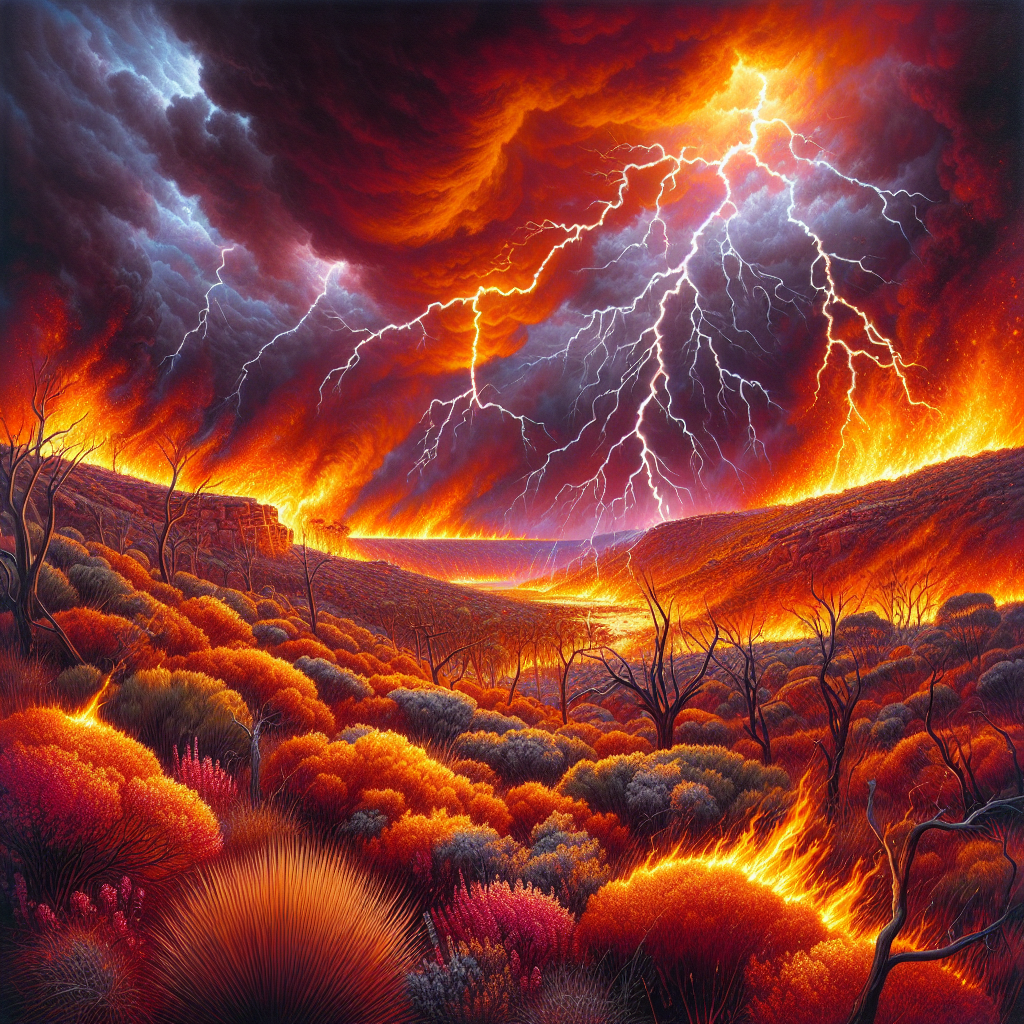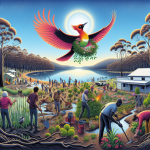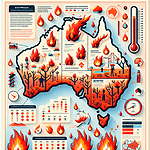What Happened in Fitzgerald River National Park?
The bushfire began in the South West region of Western Australia, renowned for its rugged beauty, biodiversity, and vast national parks. A lightning strike from a storm system sparked the fire, which quickly spread amidst the park’s dry vegetation.
The fire posed an immediate threat to the communities surrounding the area, prompting authorities to issue an emergency warning. Residents were urged to take action, with some being advised to evacuate or prepare their properties to shelter in place. Fire and emergency services worked tirelessly to contain the blaze while monitoring weather conditions to prevent further escalation.
Emergency Alerts: Safeguarding Lives and Property
- Emergency Warnings: Alerts were issued to warn people in the vicinity of the park. These warnings emphasized imminent danger and urged immediate action.
- Watch and Act Notifications: As conditions evolved, updates encouraged people to be prepared to either leave or defend their homes safely.
- Downgrade to Advice: Once firefighters made progress controlling the bushfire, the warning level was lowered, signaling reduced risk while urging continued vigilance.
Such notifications demonstrate the importance of clear communication during emergencies, offering communities the best chance to protect themselves, their families, and their livelihoods.
How Was the Threat Managed?
Thanks to the swift response of local fire crews, the bushfire was brought under control more quickly than initially anticipated. Teams utilized firebreaks, backburning, and aerial water bombers to suppress the blaze and prevent its spread.
Weather conditions also played a role in managing the threat. Although lightning from storms had sparked the fire, milder conditions later provided a welcome relief, enabling firefighters to gain the upper hand. Strategic planning, resource allocation, and local partnerships reinforced the region’s capability to handle the unfolding crisis.
Community Cooperation Made the Difference
A key factor in reducing the bushfire’s impact was the proactive cooperation of the local community. According to regional authorities:
- Residents evacuated when recommended, ensuring their safety and enabling emergency personnel to focus on the blaze.
- Volunteers stepped up to assist with emergency services, provisions, and coordination efforts.
- Visitors to the national park heeded warnings and vacated the area promptly.
This collective effort underscored the resilience and commitment of Western Australian communities in the face of adversity.
Lessons from the Fitzgerald River Bushfire
While this particular bushfire may no longer pose an immediate threat, it serves as a vital reminder that preparation and awareness save lives. Here are the takeaways for both residents and outdoor enthusiasts:
Bushfire Preparedness for Residents
- Develop a bushfire survival plan that includes evacuation routes, emergency contact numbers, and a designated safe meeting point.
- Maintain a defensible space around your home by clearing dry leaves, branches, and debris.
- Ensure your property is equipped with firefighting tools, such as hoses, buckets, and shovels.
- Stay updated on the latest fire alerts through reliable local sources like the Emergency WA website.
Safety Tips for Visitors to Bushfire-Prone Regions
- Check weather and fire risk conditions before visiting national parks or bushland areas.
- Carry a map and familiarize yourself with evacuation routes in the event of a fire.
- Comply with park regulations, including fire bans, and avoid any activities that could inadvertently ignite a fire.
Looking Ahead: The Bushfire Season Is Here
Spring and summer often bring increased risks of bushfires to Western Australia. The dry conditions coupled with seasonal storms can create the perfect storm for more incidents like the one in Fitzgerald River National Park. According to experts, communities should adopt a mindset of readiness and expect the unexpected.
Emergency services are already gearing up for the peak season by pre-positioning resources and conducting preparedness campaigns. Communities are encouraged to join in by educating themselves and implementing measures to minimize their own vulnerability.
Environmental Impact
The environmental damage from the bushfire in Fitzgerald River National Park is still being assessed. The park, known for its unique flora and fauna, may take years to recover fully from the loss of vegetation and wildlife habitats. However, the region has shown resilience over the years, with ecosystems eventually bouncing back thanks to natural regeneration processes.
Final Thoughts: A Wake-Up Call for All
The bushfire in Fitzgerald River National Park serves as a stark reminder of nature’s unpredictable forces and the immense responsibility we all share in mitigating its risks. From the relentless work of firefighters to the proactive response of local communities, the way this incident was handled exemplifies teamwork and preparedness at its best.
As we head deeper into bushfire season, let this be a wake-up call to take bushfire safety seriously. Whether you’re a resident or a visitor, planning ahead, staying informed, and cooperating with authorities could make all the difference in an emergency. Let’s all do our part to protect lives, property, and the natural wonders of Western Australia.
For the latest bushfire updates and resources, visit the Emergency WA website.


